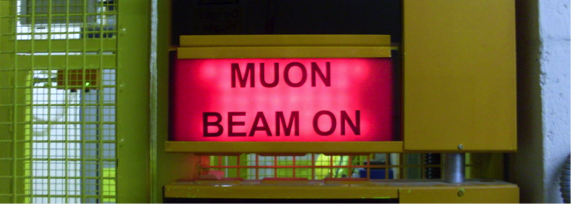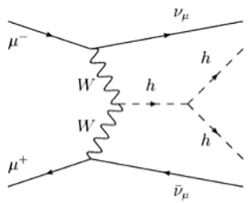Muon colliders are both precision and discovery machines, but significant R&D is required before they can be considered candidates for a next collider.

Muon colliders have been the topic of much discussion this week during the update of the European Strategy for Particle Physics (ESPP) in Granada. Proposals for such a machine are much less advanced than those for other projects under consideration for a post-LHC collider. A muon collider is therefore not being considered on the same footing as circular and linear electron—positron projects such as FCC-ee, CEPC, ILC and CLIC. Nevertheless, its potential to produce very high-energy collisions that can transfer all energy into the production of new particles in a relatively small facility is proving difficult for physicists to resist.
In one of 160 written inputs to the ESPP update, the Muon Collider Working Group points out that a 14 TeV muon collider provides an effective energy reach similar to that of a 100 TeV FCC proton—proton machine. In addition to its energy reach, the report states, a dedicated muon collider is able to precisely measure the Higgs boson’s mass and width, along with other observables: “A muon collider is therefore ideal to search for and/or study new physics and for resolving narrow resonances both as a precision facility and/or as an exploratory machine”. A 14 TeV muon machine would fit neatly into the tunnel that is currently occupied by the LHC, and in principle the technology could go to much higher energies.

Being some 200 times more massive than electrons, muons suffer significantly less from synchrotron-radiation losses and therefore can be accelerated efficiently in a circular machine. But reaching high luminosities is extremely tough owing to short muon lifetime at rest (2.2 μs) and the difficulty of producing large numbers of muons in suitably shaped bunches.
One way to conquer this problem is to “cool” an initial low-energy muon beam, which has large transverse and longitudinal emittances, by several orders of magnitude in the 6D phase-space and then rapidly accelerate it. Last year, the UK-based Muon Ionisation Cooling Experiment (MICE) demonstrated the principle of ionisation cooling, by observing 4D cooling in a low-flux muon beam. “The results point the way to an exciting programme in which muon beams of high-brightness are exploited to seek new insights into the properties of neutrinos and to explore the energy frontier with multi-TeV lepton-antilepton collisions,” says MICE spokesperson Ken Long of Imperial College, London, who was present at the ESPP symposium. Fermilab in the US also pursued such technologies in its dedicated Muon Accelerator Program (MAP), while an experiment at J-PARC in Japan last year accelerated muons by a radio-frequency accelerator for the first time.
Recently, physicists in Italy and France proposed an alternative concept for a muon collider called the Low Emittance Muon Accelerator (LEMMA), which offers a naturally cooled muon beam with a long lifetime in the laboratory frame by capturing muon–antimuon pairs created in electron–positron annihilation.
The Muon Collider Working Group, which was established by CERN in 2017, has performed a first, high-level review of these two muon collider schemes. “The focus has been on the positron-based scheme, which it was really promising but it has been found to require consolidation,” said Daniel Schulte of CERN, reporting the group’s findings in Granada this week. The group recommends that an international collaboration “promote muon colliders and organise the effort on the development of both accelerators and detectors and to define the road-map towards a CDR by the next ESPP update”. The production of muon neutrinos with a well-known flux and energy spectrum would also serve as the source for a neutrino factory.
Given the broad spectrum of views expressed in Granada this week, both during the sessions and in the sidelines, the path to a muon collider could be bumpy. “At the Higgs pole, it’s not competitive with any of the other machines, although the perspective for Higgs physics at a very high-energy muon collider is actually very good,” pointed out one participant during a discussion session about Higgs and electroweak physics. “It’s total fantasy!” said another. But the view from the expert working group is more positive. Can muon colliders at this moment be considered for the next project? “Not yet,” said Schulte, but enormous progress has been made and it is clearly worthwhile to continue R&D. “A muon collider may be the best option for very high lepton collider energies beyond 3 TeV, and has strong synergies with other projects such as magnet and RF development,” concluded Schulte. “We should not miss this opportunity.”








